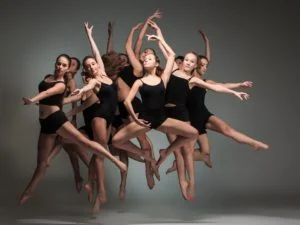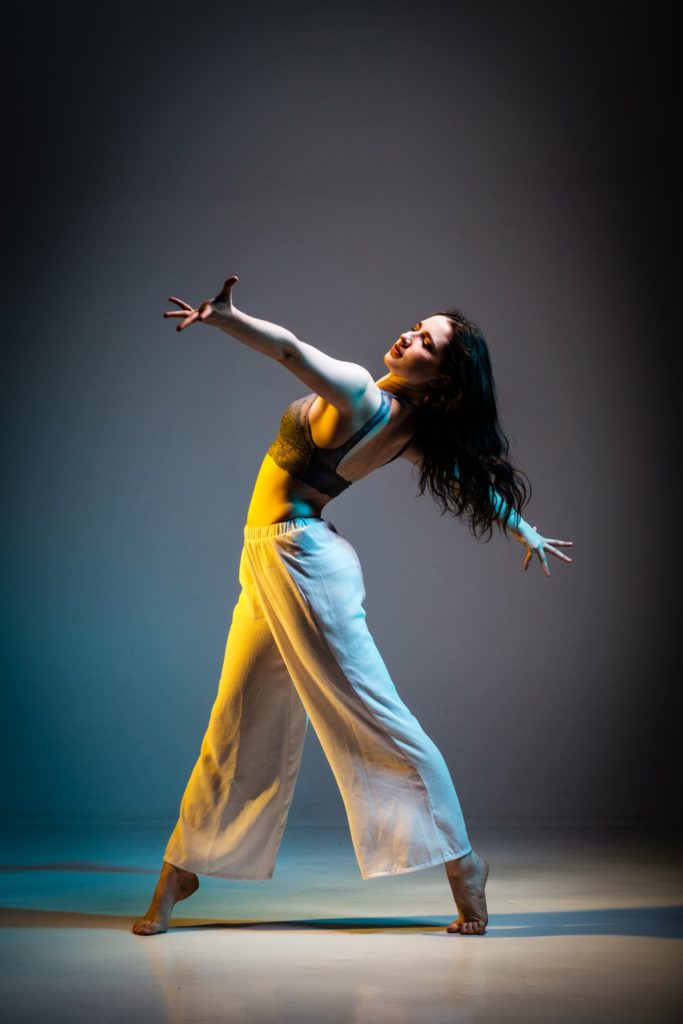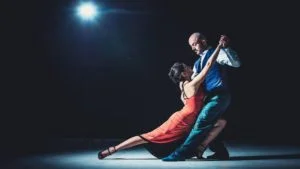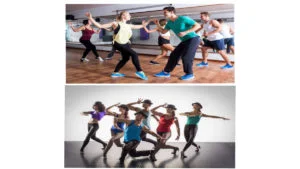Dance has been a part of our human history since the beginning of time, according to historical documents. It is the “hidden language of the soul” because it allows us to express ourselves when words fail us. Moreover, the joy that comes from dancing helps us overcome our sorrow and adversity.
Dance styles are intricately in link with the cultures in which they emerge. They evolve over time in response to societal changes. Dance is also an evolving language. Every action and gesture has its own cultural and historical context. There are different types of dances and dance styles across the globe.
In this article today, Podium intends to take you on a journey into the world of two distinct dance forms — Cancan and Foxtrot!
Cancan Dance Form
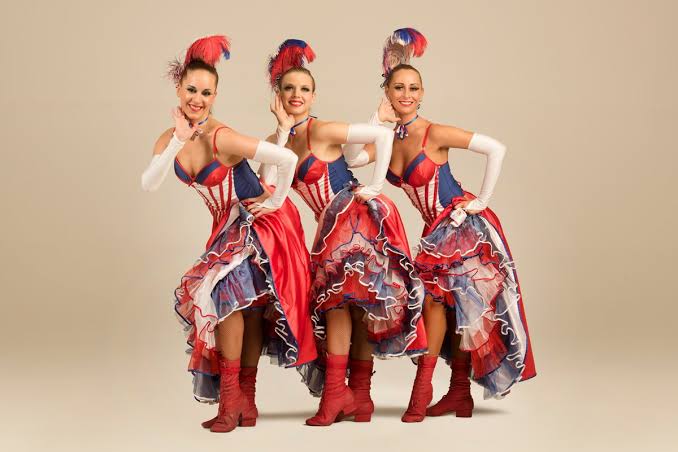
The can-can is a high-energy, physically demanding dance that first gained popularity in the 1840s as a music-hall dance. It remains popular in French cabaret to this day. The CanCan has its origins in the quadrille, one of the most popular social dances of the nineteenth century. Originally performed by couples, it is now more commonly associated with a female chorus line. The dancers would perform high kicks and flamboyant gestures with their arms.
The infectious gaiety of the French cancan has delighted audiences all over the world for nearly 150 years, with its profusion of frilly petticoats, famous high kicks, and rousing music.
Origin

The cancan’s origins are a little difficult to pinpoint. At the turn of the nineteenth century, “cancan” meant malicious gossip or scandal in French slang.
It has its origins in the quadrille, one of the most popular social dances of the nineteenth century. Originating in Paris, a popular dancer and entertainer Charles Mazurier, may have been the inspiration behind the moves. He was very athletic and able to perform jump splits with ease.
It was a way of fighting against strict Victorian values, particularly for women. The dance was a call for change and a challenge to political traditions.
Outside France

Outside of France, the can-can became famous in music halls, where it was choreographed and danced by groups of women. In the 1920s, this style introduced back to France for the benefit of tourists. high kick, rond de jambe (rapid circular movement of lower leg with knee lifted and skirt held up), port d’armes (turning on one leg while clutching the other leg by the ankle and holding it almost vertically), cartwheel, and grand écart (the flying or jump splits) are the most popular moves.
The can-can became popular in Alaska and Yukon, Canada, where can-can dancers still feature in theatrical performances to this day.
Music Of Cancan Dance

There are several music pieces associated with the CanCan dancing, many of which are featured in musicals and films. Some of the more recognizable pieces include:
- Jacques Offenbach’s Galop Infernal
- Can-Can by Cole Porter (later adapted into a film starring Frank Sinatra and Shirley MacLaine)
- Khachaturian’s Sabre Dance
- Fatboy Slim’s Everybody CanCan from Baz Luhrman’s Moulin Rouge
Cancan Today
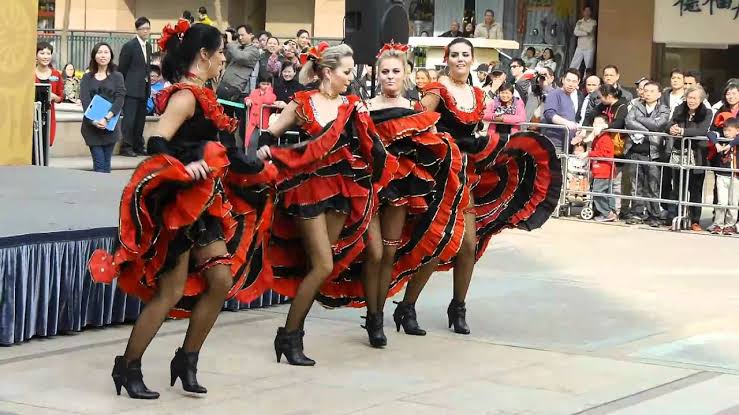
The can-can is now a part of global dance culture. The moves of the CanCan are also staple choreography for several ballets that are still in performance. The CanCan dance has become firmly entrenched in the Western arts canon, thanks to visual art, music, and the sheer joy of the moves. The simple excitement of couples dancing the quadrille spawned a body of work that millions enjoy.
Foxtrot Dance Form
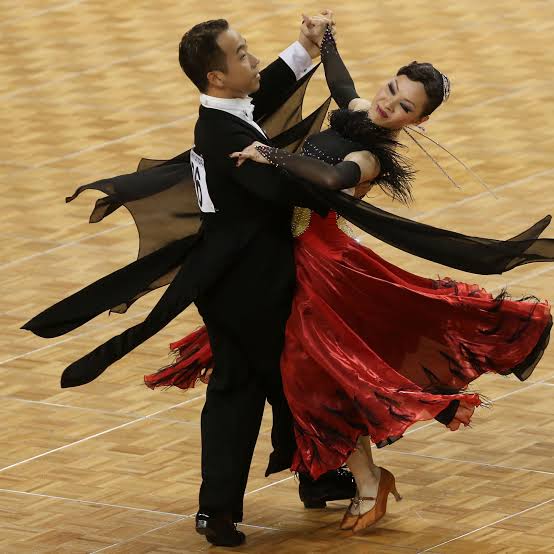
The foxtrot is a lovely, romantic dance that consists of fairly simple walking steps and side steps. It is one of the most popular Ballroom dances out there and is usually taught at most dance studios. It is similar to swing, but it’s a bit slower and more drawn out. It’s popular at formal gatherings like wedding receptions and it’s relatively easy to learn. It’s a versatile dance, performed to a wide range of tempos and music.
The foxtrot relies heavily on timing as well. Because the foxtrot is more difficult than other styles, it is usually better to first master the waltz and quickstep before attempting it.
Origin

Foxtrot’s exact origins are unknown. However, the Foxtrot was popularised in 1914 by a Vaudeville actor named Harry Fox, who performed a variety act in New York City. Moreover, it has close association with Fred Astaire and Ginger Rogers smooth dancing style. It’s become one of the most well-known ballroom dances ever.
The Foxtrot began with a lot of short “trotting” movements, as well as kicks, hops, and lunges. The Foxtrot slowed down in speed in the 1930s, and dancers began to take longer steps and create the graceful, continuous strides. It’s popular among social dancers and in ballroom dance contests.
Foxtrot Movements
The foxtrot and the waltz are fairly comparable dances. Both are exceptionally fluid dances that follow a counterclockwise dance line around the floor. The foxtrot’s rise and fall action is caused by the dancers’ lengthy walking movements. It blends swift and slow moves, allowing dancers to move more freely and enjoy their dancing more.
During the slower counts, dancers take long steps, whereas during the faster counts, they take short steps. Additionally, the tempo of the music increases, dancers abbreviate their steps to retain the “trot” of the dance. On the dance floor, some of the moves form appealing zig-zag patterns.
Rhythm And Music Of Foxtrot
The foxtrot is usually performed to big band swing music, but any sort of music can complement the performance. In the foxtrot, the first and third beats are usually more strong than the second and fourth beats.
Here is a list of few songs:
- The Way You Look Tonight by Frank Sinatra
- Lucky Jason Mraz by Colbie Caillait
- L.O.V.E by Nat King Cole
- Fly Me to the Moon by Frank Sinatra
- All I Do is Dream of You by Michael Buble
Foxtrot Dance Today

The Foxtrot has evolved into a social elegance dance that is celebrated by both the social and competitive dance circles today. In the social dance world, one can find foxtrot more commonly in dance studios, ballrooms, and venues featuring music for all the ballroom standards.
The Foxtrot is easily identifiable today because it stands on the foundation of simple walking steps and side steps. Contemporary pop music hits that work with Foxtrot timing are as popular among dancers as old Foxtrot classics. The Foxtrot is still a popular ballroom dance, with social and competitive dancers alike enjoying it.
Final Thoughts
Dance, whether with one’s feet or with one’s hands, is always handful to express one’s feelings. There are many different types of dance forms in the world, but one thing that all dance forms have in common is the message. Peace, love, and a variety of other concepts are all conveyed through dance. As a result, “dance is the hidden language of the soul of the body,” as the saying goes.
And, because we promised you the reasons and solution, we’ll deliver them when it’s convenient for you. Podium School provides personalised dance classes with expert instructors who will groom your child into a mini-master of the craft. Become a part of our contemporary dance programme today and enroll your children in one of Podium’s unique programmes. Let them glow as they grow with dance!
Also, don’t forget to read our newest archive on 7 Amazing Books For Children Less than 12 Years Old and stay on board with us for more updates!
Share with your friends

